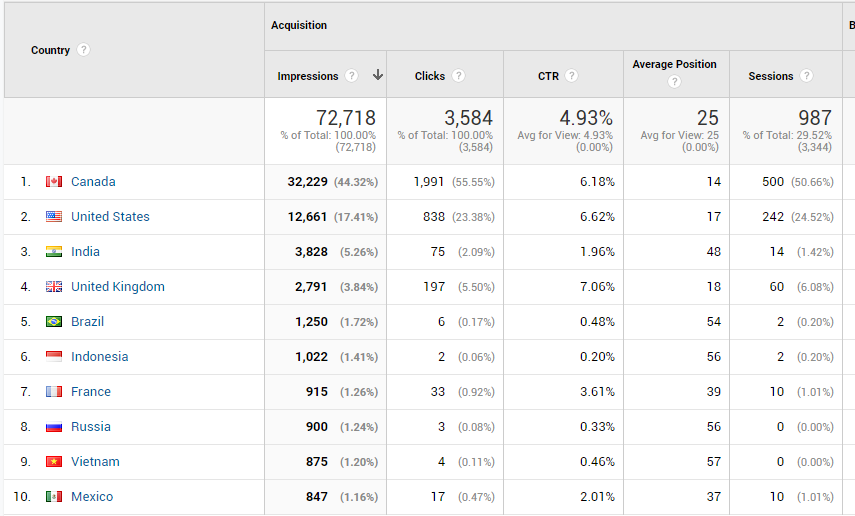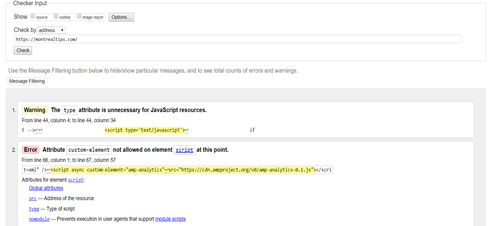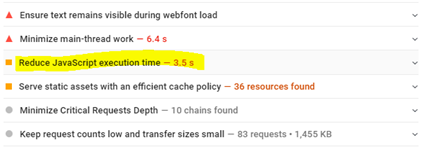GOOGLE ANALYTICS & SEO
The Search Engine’s Mission
The role of search engines is to crawl the web and index the pages that they deem worthy, in an order that provides value to users.
In doing so, their mission is to ensure users can quickly and easily find the information, products, services or content they’re looking for.
Google’s mission statement, written in 2013, is as follows: “Google’s mission is to organize the world’s information and make it universally accessible and useful.”
Source: https://www.google.com/about/
Bing’s mission statement, also written in 2013, is as follows: “At Bing our central mission is to help you search less and do more. To that end, we’re constantly looking for ways to make your search experience more efficient.”
Source: https://blogs.bing.com/search/2013/08/23/find-it-faster-with-bing-product-search/
Yahoo’s mission is to “make the world’s daily habits inspiring and entertaining.”
Source: Yahoo.com
What can we take away from this?
Essentially, search engines exist to send us away from them and to what users search for. Ironic, isn’t it?

Google Search Console on Google Analytics
Think about it. You visit a search engine, perform a search and then leave. The better the experience you have with a search engine (i.e. the greater success you have at finding what you want) the more likely you are to use that one again. With that in mind, you can rely on them wanting to return search results that are as closely related as possible to what it “thinks” you are truly looking for.
There is a lot to learn from this.
My grandpa used to say, “Tell me what someone wants and I will tell you how to control him.” And I tell you today that if you want to control how your web property shows up in search engines, you have to understand that the primary mission of the search engine is around what people want and nothing else. Yes, the companies behind them want to make money through advertising, sales, etc., but they know that these things are most profitable when driven by that primary mission of providing value.
User driven metrics control search, and likely always will.
If you are able, through your site, to provide useful, accessible, engaging, inspiring and entertaining information, then you are golden. If people want you, search engines will want you. This should be the guiding principle behind your SEO strategy.
Thankfully, GA can help you understand what searchers want, like, enjoy, engage with and how you can act on that knowledge to improve your ranking.
Google Search Console on Google Analytics
Going back to chapter 14, where we installed Google Search Console, you may recall that GA alone is not enough for us to capture adequate data to take a knowledge-driven approach to SEO.
To be able to make educated SEO decisions, you need Google Search Console. Once you connect Google Search Console data to your web property, you will have access to a wide array of reports that will help you understand how pages are performing, what keywords are sending the most traffic, what pages are getting the highest engagement, what is relevant and what is not.
The goal of this chapter is to help you capitalize on GA to optimize your site’s organic search performance in the best way possible.
Let’s jump back to the GA dashboard.
Under “Acquisition” scroll to “Search Console”.
Without Google Search Console, the default analytics results are extremely limited. In fact, GA will often return “Not Provided”.
With Search Console, you will have access to extensive data, which is enough to optimize, improve and plan ahead.
Also, Google Search Console is the best SEO tool out there that you can use for free. Make sure that you are using it and learning from it as much as possible.
Search Console Landing Pages Report

Search Console Landing Pages Report
As you can see in the report above, GA provides a list of the most popular landing pages on your site that visitors have arrived at through organic search.
The table shows a lot of valuable info, which is the result of the merge between Google Search Console data and on-site behaviour data. This helps you not only know what people did to find your page, but what they did once they arrived there, and whether they took the actions that you want them to take.
These are the terms you should know to get the most out of this report:
SERP (Search Engine Results Page) Impressions – This is the number of times your pages popped up in search results.
Clicks – The number of times people clicked on your page from an SERP.
CTR (Click Through Rate) – The number of clicks/the number of impressions * 100, meaning, it reflects the rate at which people see your listing in organic search results and choose to click through to your site.
Average Position – This is the average ranking of your page in organic search results, taking into account all the keywords that this page ranks for. If your page has an average position of 3, for example, that means your page usually shows up around the third spot in SERPs (which is a very good position to have).
Sessions – This is the number of visits that you get to your site from organic search.
Bounce Rate – This tells you how many visitors to your site (from organic search) left without taking any action.
Goal Metrics – This shows how your traffic from organic search is converting on the site.
The Landing Page Report gives you a view into how your different pages are performing from an SEO perspective. It helps you see what pages are performing well, which ones can be improved, and which pages you can capitalize on elsewhere, maybe through paid search or social campaigns.
Acquisition Google Search Console Countries Report

Acquisition Google Search Console Countries Report
In this report, you can see the amount of organic search traffic you’re getting from each country.
This insight can help you tailor future content for different countries, with different languages and different information that caters to specific audiences.
I use this report to understand who is coming to my site and how I can tailor new content for them. It also helps me identify opportunities I may be missing out on. For example, if I’m getting a lot of traffic from a specific country, but it isn’t converting, I can start looking into why that may be, and what I can do to better serve that traffic and increase conversions.
In the sample report above, you can see that the US is the second biggest source of traffic to my site. Because of that, I try to tailor some content to that audience instead of only concentrating on Canadian traffic or local traffic.
Acquisition Google Search Console Device Report

Acquisition Google Search Console Device Report
As small as this report is, it packs a big punch.
This gives you a quick overview of where you stand as a brand and site, as it shows your average position on mobile, tablet and desktop.
If you see that you have a lower than usual CTR on mobile, for example, it may be a sign that you are not appealing to users of these devices. You may find that you need to a better job with meta title and meta descriptions, or even that your site isn’t rendering properly on mobile devices
Acquisition Google Search Console Queries Report

Acquisition Google Search Console Queries Report
This report is, for SEO purposes, the most important one in the Google Search Console reports, as it shows what terms and keywords visitors used to arrive on your site.
This shows what you’re good at and what you can improve, in terms of keywords.
It is a great place to see what type of content to concentrate on more, and gives you the start of a model for how to approach future content and what types of terms to concentrate on for a more targeted and sustained approach to the details on your site.
Takeaway
GA, in partnership with Google Search Console, helps you understand how visitors search for your site, how they perceive it and if they find it relevant, giving you a starting point from which to build and improve on your content strategy for better SEO.
What makes GA so important as a tool, is that it taps into user metrics, and these user metrics are the main ranking factors of any website, as of this writing.
This is based on chapter 18 from the book “The Secret to Capitalizing on Analytics”














